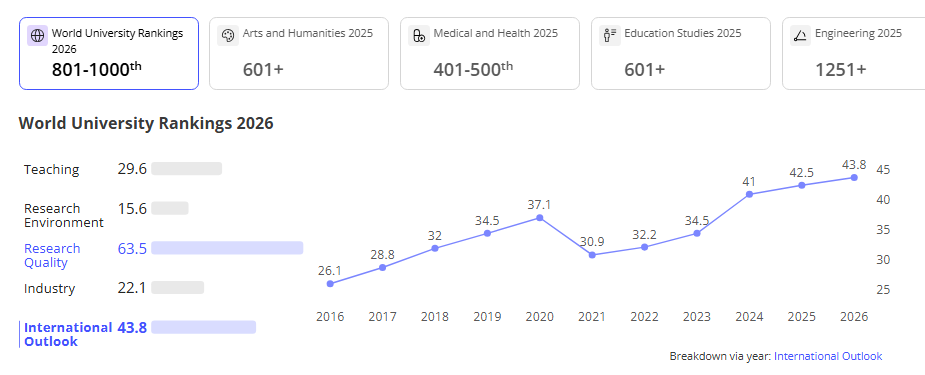University of Ibadan Reclaims Top Spot in 2026 Times Higher Education Rankings

In a major boost for public higher education in Nigeria, the University of Ibadan (UI) has reclaimed its crown as the highest-ranked Nigerian university in the 2026 Times Higher Education (THE) World University Rankings. UI now sits in the 801–1000 bracket globally, placing it shoulder-to-shoulder with top universities from across Africa and beyond.
This marks a significant comeback for UI, which had slipped to fourth place among Nigerian universities in the 2025 rankings. Its resurgence to the top shows that even within a challenging educational environment, focused effort on research quality and global visibility can yield real results.
What Drove UI's Rise?
The Times Higher Education rankings are based on a wide range of factors—including teaching quality, research influence, international outlook, and industry partnerships. For UI, the most notable improvements came from its research output and citation impact.
In recent years, the university has stepped up efforts to increase academic publishing, forge international collaborations, and improve postgraduate research training. These changes appear to be paying off.
Despite persistent challenges like underfunding and infrastructure deficits, UI has managed to stand out through sheer academic performance, particularly in the sciences and social sciences.
How Did Other Nigerian Universities Perform?
While UI leads the pack, several other Nigerian universities also made solid showings in the 2026 rankings:
- University of Lagos (UNILAG) follows closely behind, also ranking in the 801–1000 band globally. Though placed second nationally, its steady rise in international collaboration and research engagement is commendable.
- Bayero University, Kano (BUK) comes in third, appearing in the 1001–1200 range. BUK’s emergence is significant for northern Nigeria and reflects growing national diversity in academic excellence.
- Covenant University, a consistent leader in previous years (topping the charts in both 2024 and 2025), has now dropped to fourth place. Despite strong performance in industry income and teaching environment, its relative dip shows how competitive the space is becoming.
- Landmark University rounds out the top five, also ranking in the 1001–1200 band globally. It continues to gain traction, especially in areas like agricultural research and private-sector collaboration.
Why UI’s Victory Matters
UI's return to the top spot isn't just about prestige. It's about reaffirming the role of public universities in Nigeria's academic future. As the country’s oldest university, founded in 1948, UI has long been seen as a standard-bearer. This ranking shows that with the right priorities — even in difficult circumstances — public institutions can still lead the way.
Moreover, it sends a powerful message to policymakers and stakeholders: investment in research, postgraduate training, and global engagement can elevate Nigerian universities on the world stage.
Still Room for Growth
While the rankings bring some good news, the broader picture remains a mixed one. Most Nigerian universities are still ranked outside the top 1,000 globally, with many facing serious challenges around funding, facilities, and staff retention.
 Consistent rise in UI's international outlook in recent times as seen on the THE website
Consistent rise in UI's international outlook in recent times as seen on the THE website
The success of UI (and to an extent, UNILAG and Covenant) shows what’s possible — but it also highlights the need for sustained support, especially from government and industry.
UI’s performance in the 2026 rankings is not just a win for one university — it’s a reminder that Nigerian higher education can compete globally when the right priorities are in place. With continued focus on research, international partnerships, and innovation, more Nigerian universities could rise in global rankings in the years to come.
For details of the rankings and more, visit the website of the Times Higher Education .